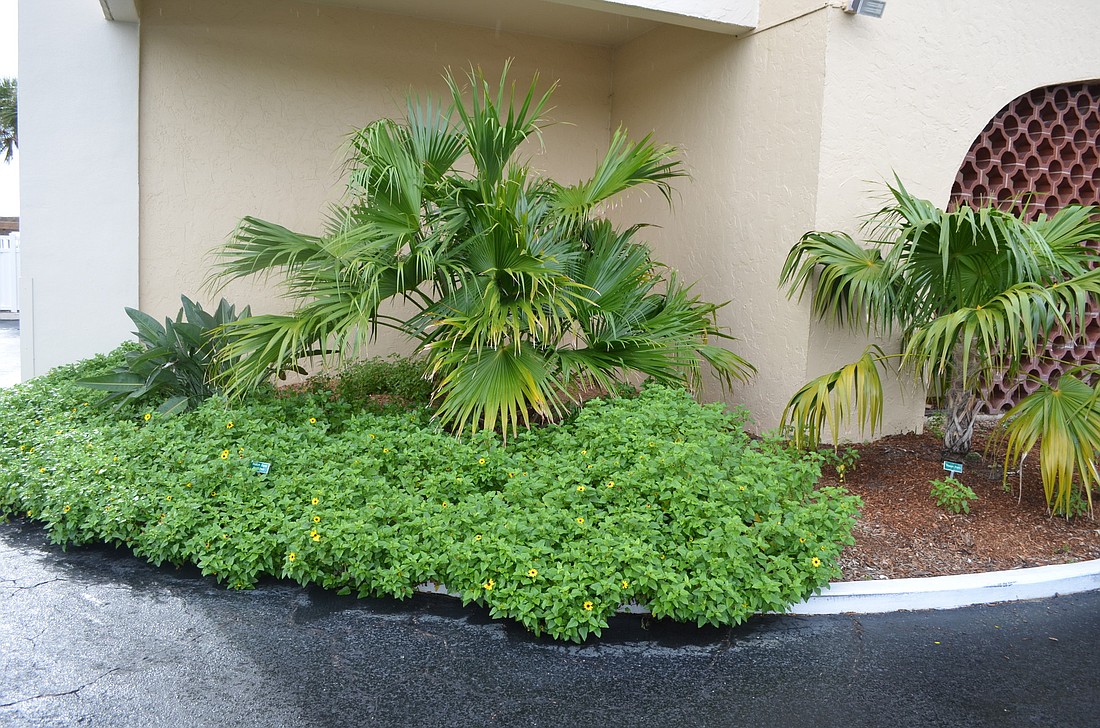- April 25, 2024
-
-
Loading

Loading

From palm trees to bushes and grass, Benjamin Franklin Drive on Lido Key is filled with vegetation. Plants vary in size and shape, but most of them have one thing in common: Like most of its residents, they’re not from around here.
Lido Regency condominium is changing that by proving that just because a majority of a condo’s residents aren’t Florida natives, that doesn’t mean its plants can’t be.
In 2013, condo association board members decided they needed to make changes to the landscape. The condo’s water and maintenance bills were high and only getting higher, and board members wanted plants that could handle the salt and wind that impact the beachfront property. So, they decided to replace the property’s landscaping with Florida native plants.
In collaboration with Sarasota’s Urban Design Studio and Florida Native Plants Nursery, planting stages began last April and were completed in the fall.
“We’re at least 80% to 90% Florida native right now,” board member Sam Nichols said. “Our goal is to be 100%. There’s a local alternative for all the plants we see around here that aren’t native.”
The vegetation won’t be fully grown for another year or two, but Nichols said the association is happy with the changes so far.
“You start by hand-watering these plants three times a week, then you go to two times and then one time,” Nichols said. “Then it reaches the point where you don’t have to water it at all.”
The association spent $10,000 to $12,000 on new vegetation but is saving more than it spent. Board members decided to eliminate the property’s irrigation system, which Nichols estimates will save $8,000 to $9,000 a year in water bills and thousands of dollars in maintenance. The property also no longer has the need for a lawnmower or excess fertilizer.
“It’s not something you have to replant annually,” Nichols said. “Before, you would plant something and it would look good for a year or two, but you have to replace it again and again. With these, you have to occasionally trim them, but other than that, it’s very low maintenance. These plants will last forever unless something major comes through the area.”
Approximately 30 native species were planted, including the railroad vine, Spanish stopper, melaleuca mulch, thatch palm and sea grape.
“This is what makes sense in the long term,” Building Manager Abby Gordon said. “These plants actually belong here. Environmentally and financially, it just makes sense.”